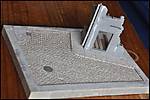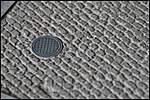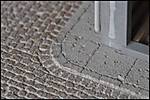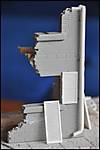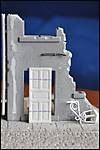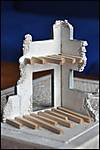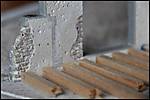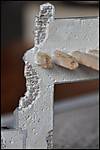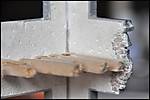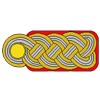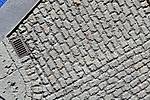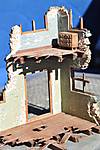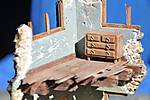PHOTO 1: The kit
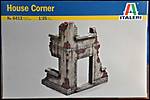
Then, with the kit in hand I starting trawling the boards looking for inspiration and hoping to learn a few new techniques that I could try out. In my search I encountered Bruce D's (aka "Meaty Hellhound") "Never Abandoned" Jagdpanther diorama (see here). I really liked the look of the strewn rubble and the cobblestones made out of cork (a great technique attributed to Carlos Elias, aka "blockhaus"), and wanted to give it a try myself.
One of the cork saucepan mats from the kitchen made for a suitable sidewalk (6mm thick). This was glued into an old wooden base that I made well over a decade ago. I then found some thin (2mm) cork sheets in a local dollar store. This was cut to size and also glued onto the base to star to build up the roadway. A second sheet of the 2mm cork was cut up into hundreds of small pieces to represent the cobblestones, which were then painstakingly glued onto the base (see Photo 4). I glued the guttering down first and then added row after row of the cobblestones to gradually build up the roadway. Photos 2 and 3 show the position of the sidewalks, placemarks for where the building ruin will go, and the majority of the cobblestones now laid. As indicated on the base, I will also add a manhole and drain to the diorama for additional interest. Both of these will be sourced from Miniart kits. These only just arrived this morning, and so once these have been installed I will be able to finish adding all of the cobblestones around them.
PHOTO 2: Layout of the base
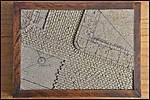
PHOTO 3: Building in place
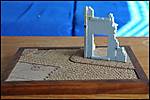
PHOTO 4: Cobblestones

As can be seen in the photos, when first laid, the cobblestones are very square and smooth and look quite unrealistic. Roughing the edges with the sharp end of a needle file solves this problem, producing a very believable texture. Compare the cobblestones adjacent to the areas as yet unlaid to the rest to see what I mean by this. See Photo 2 above, and Photo 5 below for a close up of this. Photos 6 and 7 show additional details of the cobblestones and sidewalk thus far.
PHOTO 5: Cobblestone detail 1
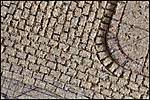
PHOTO 6: Cobblestone detail 2
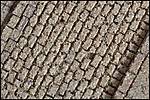
PHOTO 7: Cobblestone and sidewalk detail 3

Those of you familiar with the old Italeri kits will know that they are only one-sided and do not have any interior detail. This was solved by pouring some plaster into the hollow interior of the building. Photos 8 and 9 below were taken once the plaster had set, though before sanding. I have started to gouge out some of the plaster around some of the broken portions of the of the wall. Once sanded, these sections will be filled with exposed brick fashioned from the same cork used for the cobblestones. Photo 9 below shows the balsa floor joists which will form what is left of the second floor. Meanwhile, I will also add broken window frames, doors and floorboards, made from balsa (shown in Photo 10, which also shows additional cobblestones and one of the saucepan mats used to make the sidewalk).
PHOTO 8: Interior walls 1

PHOTO 9: Interior walls 2
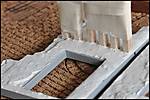
PHOTO 10: Wood and stone

Extra details such as a door, window shutters, a downpipe, a street lamp, and street signs will also be added in due time. Most of these will also be sourced from Miniart sets and more photos of these will be added in subsequent posts.
Finally, I have also made some of the rubble which will be strewn about the diorama. This was simply made from plaster, coloured with different pastel dust, which once set was later broken into various shaped and sizes. Thanks again go to "Meaty Hellhound" for this technique.
PHOTO 11: Rubble

More photos will be posted as this build slowly progresses. As always, I welcome any and all suggestions or comments that you may have for me. Speaking of suggestions, I am yet to decide what to do with this diorama. At this point, I am leaning towards making this diorama depict a scene from Normandy during WW2 (possibly showing a civilian scene of the 1940 exodus), although may instead depict a scene from Holland. Thoughts/ideas/suggestions? While you are at it, I am also seeking ideas as to what AFV or other to place on this scene. I look forward to hearing your thoughts. Cheers.







